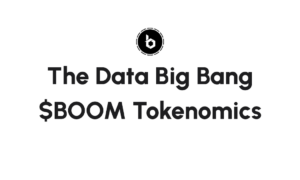In today’s digital world, where inclusivity is increasingly emphasized, organizations are adopting advanced technological methods to ensure that web applications are accessible to all users, including those with disabilities. This has become especially important in light of legal frameworks like the Americans with Disabilities Act (ADA). As a software developer and researcher with expertise in accessibility, Vishnu Ramineni is at the forefront of this movement, advocating for a seamless digital experience for all users.
“Web accessibility is not just a compliance checkbox; it’s about creating equal digital spaces for everyone, regardless of their abilities,” explains Vishnu Ramineni, who has extensive experience in building and scaling accessible digital solutions, particularly in healthcare and e-commerce. His research focuses on leveraging artificial intelligence (AI) and machine learning (ML) to address accessibility gaps in web applications.
AI in Accessibility: A Dynamic Approach to Evolving Web Needs
As web platforms become more complex, manual accessibility testing methods are proving inadequate. Vishnu’s research highlights how AI and ML can help overcome these challenges by automating the detection and remediation of accessibility issues. This approach not only speeds up the identification of barriers but also suggests improvements to make web content more accessible for people with various disabilities. “By using AI tools and ML models, developers can predict accessibility barriers and implement changes in real-time, creating a more inclusive web environment,” Vishnu notes.
One of the significant contributions of AI is its ability to analyze large datasets from web applications, detect ADA non-compliance, and suggest fixes automatically. Vishnu’s research demonstrates that this method is especially effective for addressing common issues like missing alt text, low contrast ratios, and improper keyboard navigation.
Enhancing E-Commerce Accessibility with AI-Driven Solutions
The research conducted by Vishnu Ramineni also focuses on the application of AI in enhancing accessibility in e-commerce platforms. He proposes a novel voice assistant approach that helps users with disabilities navigate through complex web interfaces. This AI-driven solution uses natural language processing (NLP) to ensure that users with cognitive impairments can better understand and interact with digital content. “By integrating AI with user-centered design principles, we can tailor the digital experience to meet the unique needs of users, making e-commerce more accessible to everyone,” Vishnu asserts.
Balancing AI and Human Input for Optimal Accessibility
While AI offers promising solutions for web accessibility, Vishnu emphasizes the importance of maintaining human oversight in the process. “AI can automate many aspects of accessibility testing, but human expertise is crucial for ensuring that the changes are contextually appropriate and meet legal requirements like ADA and WCAG standards,” he explains. This approach ensures that AI-generated suggestions are not only technically sound but also align with the specific needs of end-users.
Real-World Impact: Improving Accessibility in Healthcare Applications
Vishnu Ramineni’s expertise extends into healthcare, where accessible web and mobile solutions can directly impact patient care and engagement. His work on digital platforms like the Albertsons Digital Pharmacy and Apollo 24/7 apps emphasizes the importance of accessibility in providing seamless healthcare experiences. By ensuring that these platforms are compliant with ADA guidelines, he has helped make it easier for patients with disabilities to access essential services such as online consultations, prescription management, and health records. “The aim is to ensure that everyone, regardless of their physical abilities, can interact with healthcare technology effectively,” Vishnu shares.
AI-Driven Accessibility: Transforming the Development Process
In Vishnu’s projects, AI and machine learning have been game changers for streamlining the development of accessible applications. His research emphasizes automating repetitive tasks like checking for accessibility violations and providing real-time remediation suggestions. This automation has allowed developers to focus more on creating user-friendly interfaces without worrying about missing critical compliance standards. “By integrating AI-based accessibility checks directly into the development pipeline, we reduce the time and effort required to ensure compliance, ultimately delivering better user experiences,” Vishnu explains. This approach not only increases productivity but also enhances the overall quality of digital products by ensuring they are accessible right from the initial stages of development.
Addressing Accessibility Bias with Data-Driven Approaches
One challenge Vishnu has tackled in his research is the potential bias in AI models used for accessibility. If not properly trained, these models might fail to recognize the diverse needs of all user groups, particularly those with cognitive or neurological disabilities. To address this, Vishnu has worked on refining data collection methods, ensuring that AI models are trained on datasets that represent a wide range of disabilities and interaction styles. “It’s critical to have diverse training data so that our AI systems can understand and address the varied challenges faced by different users,” he emphasizes. This focus on inclusivity ensures that AI-driven solutions not only comply with accessibility standards but also genuinely meet the needs of end-users, creating a more equitable digital space for all.
The Future of AI-Enhanced Accessibility
Looking forward, Vishnu believes that the combination of AI and traditional accessibility practices will drive the future of inclusive web design. By continuously training AI models with diverse datasets and incorporating feedback from users with disabilities, developers can create adaptive interfaces that evolve alongside users’ needs. “The ultimate goal is to bridge the gap between accessibility guidelines and real-world implementation, making the digital space truly open to all,” he says.
Vishnu’s efforts in this field reflect a commitment to leveraging cutting-edge technology to solve real-world challenges. His work is shaping the future of web accessibility, ensuring that digital transformation does not leave anyone behind.
Vishnu Ramineni committed to continuing research in this vital area, with a focus on topics like “AI-Driven Accessibility Testing in Dynamic Web Environments,” “Personalized Accessibility Adjustments Using ML,” and “Addressing Bias in AI Models for Web Accessibility.” Through these research efforts, He aims to further advance the field of digital accessibility, making the internet a truly inclusive space for all users. For more information on his work and contributions to the field, you can visit his website at vishnuramineni.com



































